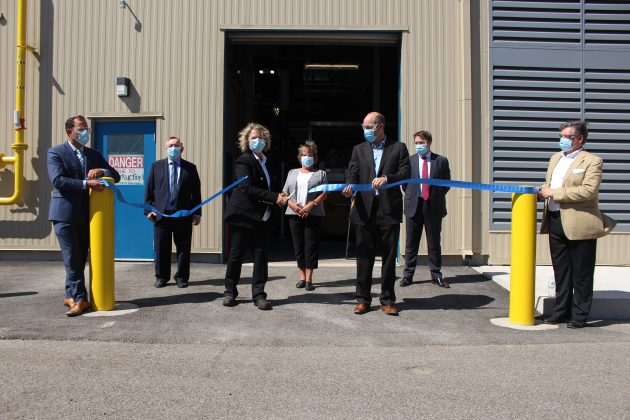
GM invests $28M in cogeneration at St. Catharines engine plant
by CM Staff

Project cuts greenhouse gas emissions and cuts the propulsion plant's electricity costs

(L-R) Walter Sendzik, mayor of St. Catharines, Jim Bradley, regional chair, Geordie Walker, CEO of Walker Industries, St. Catharines MPP Jennie Stevens, Carolyne Watts, St. Catharines Propulsion Plant director, St. Catharines MP Chris Bittle, and David Paterson, GM Canada vice-president of corporate and environmental affairs, celebrate the commissioning of the St. Catharines Propulsion Plant cogeneration facility.Photo: Ann Power
OSHAWA, Ont. — General Motors Canada has completed a $28 million investment in cogeneration at its St. Catharines Propulsion plant.
The automaker forecasts cogeneration will reduce net greenhouse gas emissions by approximately 70% while buffering the engine and transmission plant from rising electricity and carbon costs.
The 6.4-megawatt project uses renewable landfill gas delivered by pipeline from the nearby Walker landfill working with partner Integrated Gas Recovery Services (IGRS) to generate electricity from newly installed engines at the plant. GM will also recover the thermal energy typically considered waste to power and heat the plant.
Instead of using natural gas, the new engines are adapted to run on the renewable landfill gas delivered to the plant through a short pipeline. The landfill collects the gas instead of it being emitted as methane or flared into the environment.
GM will also recover the thermal energy typically considered waste to power and heat the plant.
The project was also facilitated through partnerships with Alectra Utilities and the Ontario Centres of Excellence. It’s the first complete renewable landfill gas industrial cogeneration system in Ontario delivering renewable landfill gas from an offsite source.
GM has committed to power all of its global operations’ electricity needs with 100% renewable energy by 2040. Greater use of thermal energy helps address heating needs to further reduce emissions.
The facility will be running at full capacity by Oct. 31.